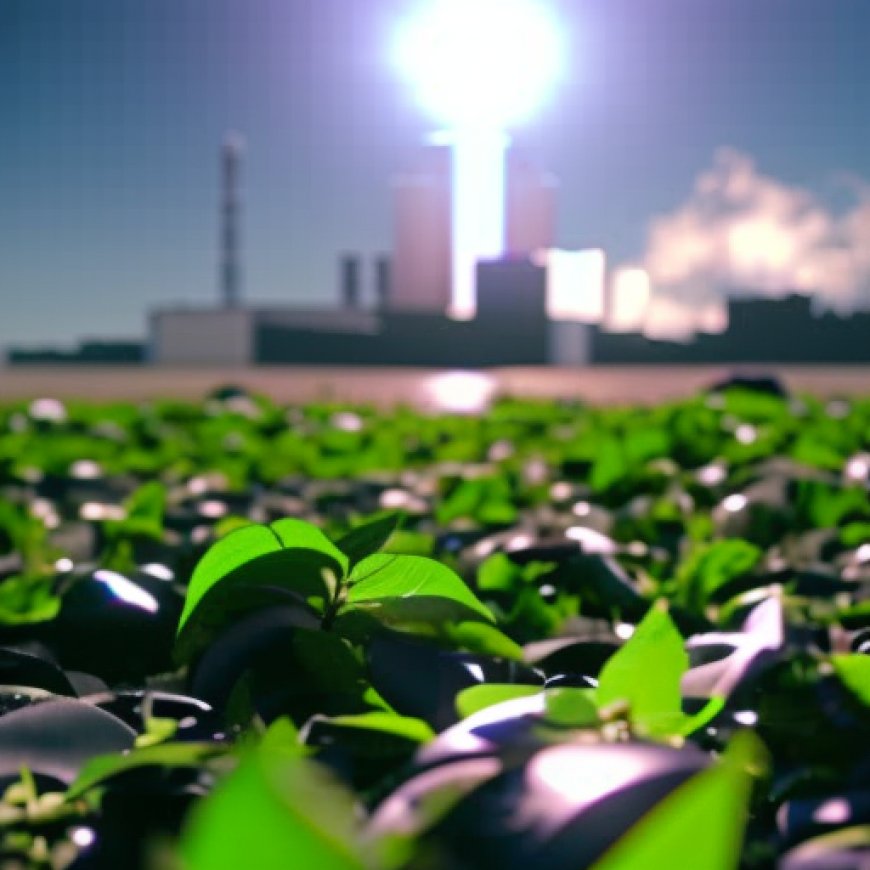New MIT tech could help the world’s biggest polluters clean up their emissions
New MIT tech could help the world’s biggest polluters clean up their emissions Freethink


More than Half of US Greenhouse Gas Emissions Come from Transportation and Electricity Generation

More than half of US greenhouse gas emissions come from transportation and electricity generation, and, thankfully, the falling cost of clean alternatives, such as EVs and solar power, offers a clear path to decarbonizing both sectors.
The Challenge of Decarbonizing Heavy Industry
However, another 23% of US emissions comes from industry — and slashing those emissions is going to be a bigger challenge.
“Steel, cement, and chemicals are the top three emitting industries and are among the most difficult to decarbonize, owing to technical factors like the need for very high heat and process emissions of carbon dioxide, and economic factors including low profit margins, capital intensity, long asset life, and trade exposure,” researchers at the Brookings Institute wrote in 2021.
Until we can figure out how to replace fossil fuels in industry, the next best thing may be to stop their emissions from reaching the atmosphere.
Carbon Capture 101
The idea behind carbon capture is to extract CO2 from a highly concentrated source, such as flue gas, before it is released into the atmosphere. The carbon can then be stored underground or used to make products, such as jet fuel.
(This is different from direct air carbon capture, which pulls CO2 from the atmosphere, where it is highly diffused.)
The significant energy needed for regeneration is holding back the adoption of carbon capture technology.
These systems can capture 90% or more of the carbon in flue gas, and they typically work by funneling the exhaust into a special chamber filled with a solution that contains ammonia-based compounds, called “amines.” The CO2 in the flue gas binds to the amines in this solution, while the rest of the exhaust is vented into the atmosphere.
Afterward, the solution is heated to temperatures around 120 °C (248 °F) to break the bond between the amines and the CO2, letting off a stream of pure CO2 that is pressurized and stored, while the amine solutions are reused.
This process, called “regeneration,” is energy-intensive and expensive, which is holding back the widespread adoption of carbon capture technology — today, there are only about 40 commercial-scale systems in operation in the entire world.
The Alternative: Electro-Chemical Reactions for Regeneration
Heat isn’t the only option for regeneration. About a decade ago, researchers at MIT demonstrated that electro-chemical reactions — the types of reactions that generate electricity in batteries — could be used to free captured CO2 from amines.
An MIT team led by associate professor Betar Gallant then developed an electro-chemical technique that can free captured carbon and convert it into something useful — all in one step.
They put an electrode into one of the amine solutions used to capture carbon. When voltage was then applied to the electrode, the CO2 separated from the solution and transformed into carbon monoxide, which is used to create the chemicals needed for many fuels, plastics, and other products.
In theory, this is a less energy-intensive, cleaner approach to regeneration — the heat used in existing systems often comes from fossil fuel-derived steam, which reduces their benefit, but this lower-energy approach makes it easier to rely solely on electricity sourced from renewables, according to Gallant, which are clean and getting increasingly cheaper.
The fact that the process reduces the energy requirement while still creating something of value could also help make it more economically viable. However, the researchers still weren’t sure exactly how this system worked or how to optimize it.
“We showed that this electrochemical process was feasible in very early concepts,” said Gallant. “Since then, there have been other studies focused on using this process to attempt to produce useful chemicals and fuels. But there’s been inconsistent explanations of how these reactions work, under the hood.”
New Research Clears Up Mystery Surrounding Electro-Chemical System
Gallant’s team has now published new research clearing up some of the mystery surrounding their electro-chemical system.
For this new study, published in ACS Catalysis, they captured CO2 in a variety of amine-containing solutions and then applied their electro-chemical technique to see which resulted in the highest concentration of carbon monoxide.
They determined that the type of amine
SDGs, Targets, and Indicators
| SDGs | Targets | Indicators |
|---|---|---|
| SDG 7: Affordable and Clean Energy | Target 7.2: Increase the share of renewable energy in the global energy mix | The falling cost of clean alternatives, such as EVs and solar power |
| SDG 9: Industry, Innovation, and Infrastructure | Target 9.4: Upgrade infrastructure and retrofit industries to make them sustainable | The need to decarbonize difficult-to-decarbonize industries like steel, cement, and chemicals |
| SDG 13: Climate Action | Target 13.2: Integrate climate change measures into national policies, strategies, and planning | The adoption and development of carbon capture technology to reduce emissions from industry |
| SDG 17: Partnerships for the Goals | Target 17.16: Enhance the global partnership for sustainable development | The collaboration between researchers, institutions, and industries to develop and optimize carbon capture technology |
1. Which SDGs are addressed or connected to the issues highlighted in the article?
The issues highlighted in the article are connected to SDG 7 (Affordable and Clean Energy), SDG 9 (Industry, Innovation, and Infrastructure), SDG 13 (Climate Action), and SDG 17 (Partnerships for the Goals).
2. What specific targets under those SDGs can be identified based on the article’s content?
Based on the article’s content, the specific targets that can be identified are:
– Target 7.2: Increase the share of renewable energy in the global energy mix.
– Target 9.4: Upgrade infrastructure and retrofit industries to make them sustainable.
– Target 13.2: Integrate climate change measures into national policies, strategies, and planning.
– Target 17.16: Enhance the global partnership for sustainable development.
3. Are there any indicators mentioned or implied in the article that can be used to measure progress towards the identified targets?
Yes, there are indicators mentioned or implied in the article that can be used to measure progress towards the identified targets. These indicators include:
– The falling cost of clean alternatives, such as EVs and solar power, as an indicator of progress towards increasing the share of renewable energy in the global energy mix (Target 7.2).
– The need to decarbonize difficult-to-decarbonize industries like steel, cement, and chemicals as an indicator of progress towards upgrading infrastructure and retrofitting industries to make them sustainable (Target 9.4).
– The adoption and development of carbon capture technology to reduce emissions from industry as an indicator of progress towards integrating climate change measures into national policies, strategies, and planning (Target 13.2).
– The collaboration between researchers, institutions, and industries to develop and optimize carbon capture technology as an indicator of progress towards enhancing the global partnership for sustainable development (Target 17.16).
4. SDGs, Targets, and Indicators
| SDGs | Targets | Indicators |
|---|---|---|
| SDG 7: Affordable and Clean Energy | Target 7.2: Increase the share of renewable energy in the global energy mix | The falling cost of clean alternatives, such as EVs and solar power |
| SDG 9: Industry, Innovation, and Infrastructure | Target 9.4: Upgrade infrastructure and retrofit industries to make them sustainable | The need to decarbonize difficult-to-decarbonize industries like steel, cement, and chemicals |
| SDG 13: Climate Action | Target 13.2: Integrate climate change measures into national policies, strategies, and planning | The adoption and development of carbon capture technology to reduce emissions from industry |
| SDG 17: Partnerships for the Goals | Target 17.16: Enhance the global partnership for sustainable development | The collaboration between researchers, institutions, and industries to develop and optimize carbon capture technology |
Behold! This splendid article springs forth from the wellspring of knowledge, shaped by a wondrous proprietary AI technology that delved into a vast ocean of data, illuminating the path towards the Sustainable Development Goals. Remember that all rights are reserved by SDG Investors LLC, empowering us to champion progress together.
Source: freethink.com

Join us, as fellow seekers of change, on a transformative journey at https://sdgtalks.ai/welcome, where you can become a member and actively contribute to shaping a brighter future.







